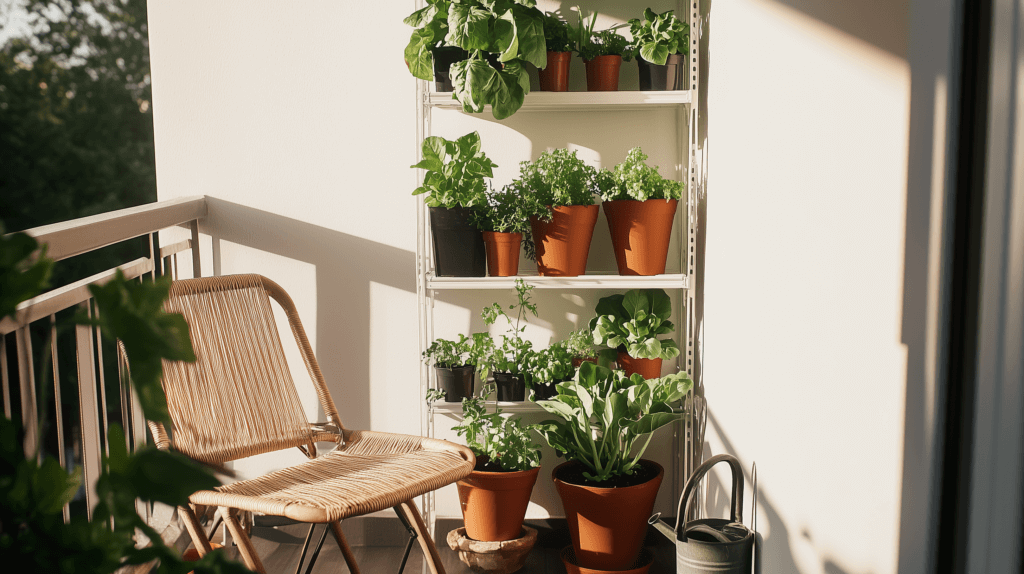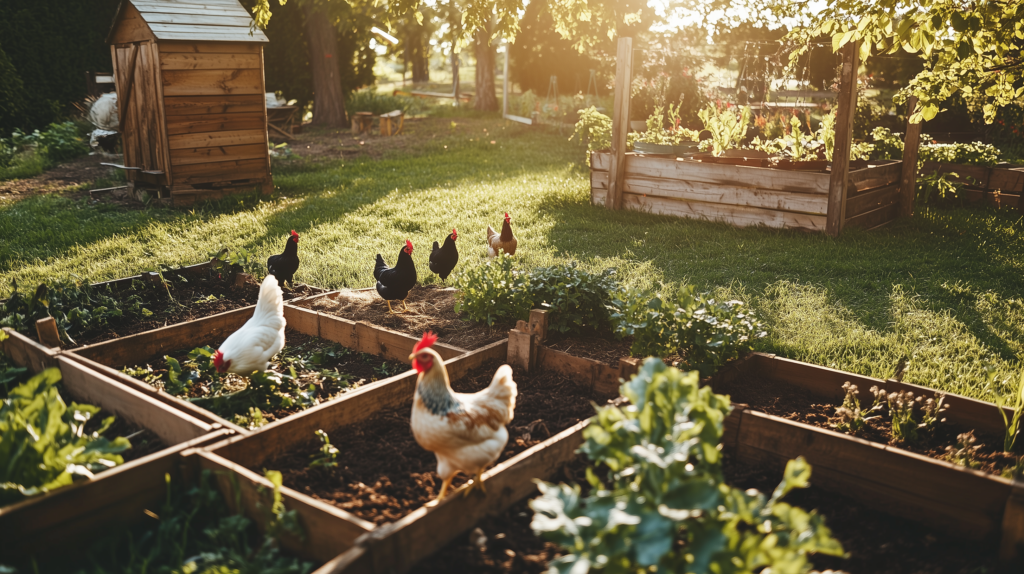This post may contain affiliate links, including those from Amazon Associates. If you make a purchase through these links, I may earn a commission at no additional cost to you. Learn more about our affiliate policy.
There’s something magical about stepping out onto your balcony and snipping fresh basil for tonight’s dinner or plucking a ripe tomato for a sandwich. I used to think that kind of garden-to-table experience was only for people with big backyards or sprawling homesteads.
But here’s the truth: you don’t need acres of land to start growing your own herbs and vegetables. In fact, you can create a lush, productive garden right on your balcony. This is one of the keys to what people are calling apartment homesteading.
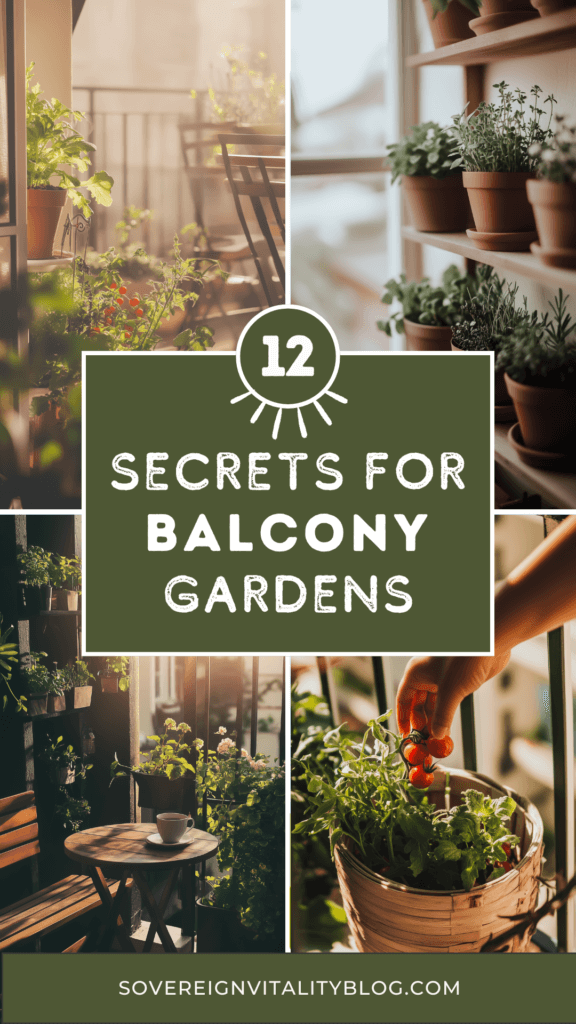
When I first started exploring the idea of apartment homesteading, I felt completely overwhelmed. Where would I put everything? Would my plants even survive? But through a lot of trial, plenty of error, and a few game-changing discoveries, I realized how doable, and rewarding, it can be.
In this post, I’m sharing 12 of the best-kept secrets I’ve learned for growing vegetables on a balcony. These tips aren’t just about making the most of a small space but about creating a little slice of nature in your everyday life, even in the city. Whether you’re dreaming of fresh herbs, hearty greens, or juicy tomatoes, these secrets will help you transform your balcony into an urban homesteading haven.
Secret 1: Start with the Right Containers

Choosing the right containers is key to a thriving balcony garden. In small spaces, every inch counts, so here’s what to keep in mind:
- Material Matters: Opt for lightweight pots like fabric grow bags or plastic containers for easy movement. Terracotta pots look great but dry out quickly and are heavier.
- Size Counts: Deep-rooted veggies like tomatoes need pots at least 12–18 inches deep, while herbs and lettuce thrive in smaller containers.
- Drainage is Essential: Always use pots with drainage holes to prevent root rot. For decorative pots without holes, use a liner pot inside.
- Go Vertical: Maximize space with hanging planters, tiered shelves, or wall-mounted containers.
Secret 2: Choose Balcony-Friendly Vegetables
Not all vegetables are created equal for balcony gardening. Some vegetables and herbs are easy to grow on an apartment balcony. Here’s how to choose the best ones:
- Easy-to-Grow Options: Start with lettuce, spinach, cherry tomatoes, and peppers—they thrive in containers and are beginner-friendly.
- Compact Varieties: Try bush tomatoes, dwarf carrots, or baby bell peppers to save space.
- Climbing Plants: Beans, peas, and cucumbers grow upward, making them perfect for vertical setups.
- Herbs: Basil, parsley, and thyme are ideal for small pots and add fresh flavor to your dishes.
Secret 3: Make the Most of Vertical Space
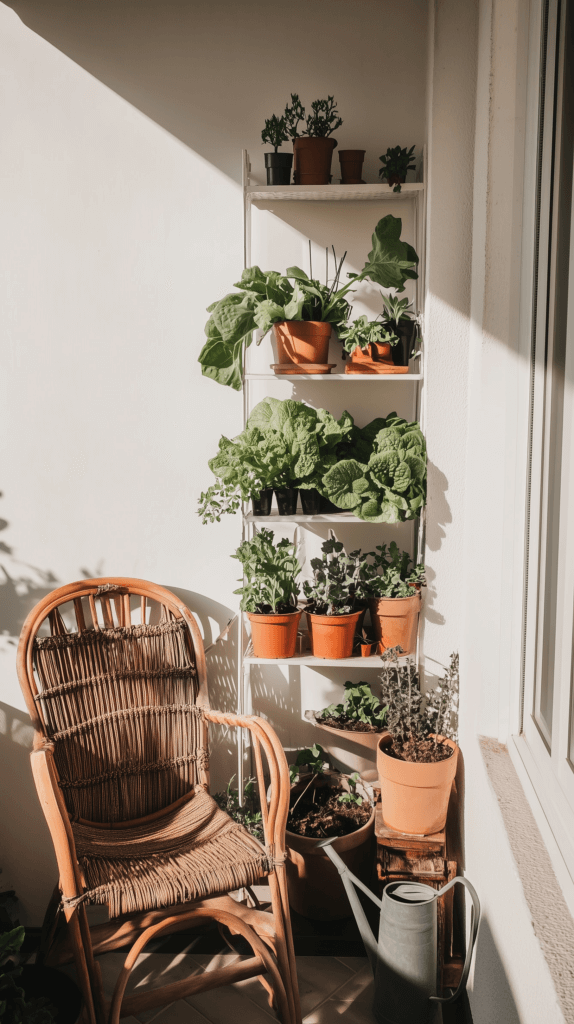
Vertical gardening is a game-changer for small balconies. Here’s how to do it:
- Use Tools: Trellises, wall planters, and tiered shelves help maximize your planting area.
- Grow Climbing Plants: Cucumbers, beans, and peas naturally grow upward and thrive with support.
- Layer Plants: Use shelves or hanging baskets to stack pots and create a visually appealing garden.
Secret 4: Optimize Sunlight Exposure
Sunlight is the lifeline of your balcony garden. Here’s how to make the most of it:
- Observe Patterns: Track how sunlight hits your balcony throughout the day.
- Strategic Placement: Move plants to sunnier spots as needed.
- Enhance Light: Use mirrors or light-colored surfaces to reflect sunlight onto your plants.
- Grow Shade-Tolerant Vegetables: In less sunny spots, opt for leafy greens like lettuce and spinach.
Secret 5: Use High-Quality Potting Soil
Healthy plants start with the right soil. Here’s what to consider:
- Choose Potting Soil: Unlike garden soil, potting soil is lighter and designed for containers, promoting better drainage.
- Add Nutrients: Mix in organic compost or worm castings to enrich the soil.
- Look for Extras: Consider potting soil with built-in fertilizers or moisture-retaining crystals.
Secret 6: Water Wisely
Watering can be tricky for container plants, but these tips can help:
- Avoid Overwatering: Check the soil—water only when the top inch feels dry.
- Prevent Underwatering: Small pots dry out quickly, so monitor them daily in hot weather.
- Use Self-Watering Pots: These pots reduce the risk of forgetting to water.
- Try Drip Irrigation: A simple system ensures consistent moisture for multiple plants.
Secret 7: Fertilize for Success

Container plants need regular feeding to stay productive. Here’s what to do:
- Choose Organic Fertilizers: Use compost, worm castings, or liquid seaweed for a natural nutrient boost.
- Follow a Schedule: Feed plants every 2–4 weeks, depending on the fertilizer type.
- Apply Properly: Dilute liquid fertilizers and avoid overfeeding, which can damage roots.
Secret 8: Control Pests Naturally
Keep pests at bay with these eco-friendly methods:
- Use Natural Sprays: Mix water with neem oil or garlic to deter pests safely.
- Encourage Beneficial Insects: Attract ladybugs or lacewings to eat harmful bugs.
- Try Companion Planting: Grow marigolds with tomatoes or basil with peppers to repel pests naturally.
Secret 9: Plan for All Seasons
A year-round garden is possible with the right planning:
- Rotate Crops: Alternate plant types to maintain soil health and avoid pests.
- Grow Hardy Plants: Choose cold-tolerant veggies like kale and spinach for winter.
- Transition with the Seasons: Start seeds indoors in spring and move pots inside during frost.
Secret 10: Maximize Space with Companion Planting
Companion planting boosts plant health and maximizes space:
- Pair Plants Strategically: Grow tomatoes with basil or lettuce with carrots for mutual benefits.
- Repel Pests: Use marigolds or nasturtiums alongside vegetables to deter insects.
- Optimize Soil Usage: Combine deep-rooted and shallow-rooted plants in the same pot.
Secret 11: Create a Relaxing Atmosphere
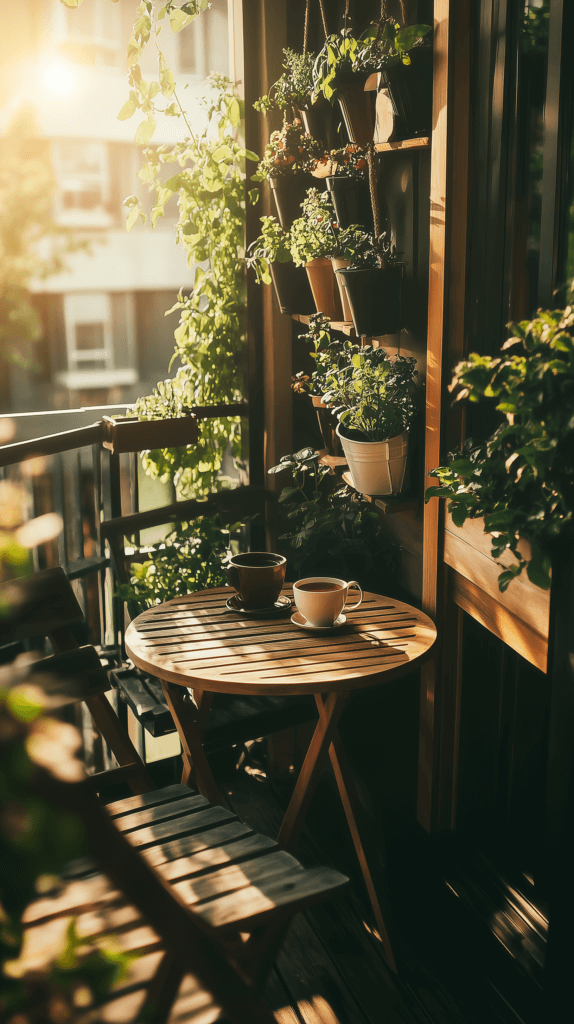
Your balcony garden can be functional and beautiful. Here’s how:
- Add Flowers: Mix in blooms like lavender or nasturtiums for color and pollinator attraction.
- Decorate with Style: Use string lights, small fountains, or colorful pots to elevate the space.
- Create a Retreat: A cozy chair or small table transforms your balcony into a peaceful oasis.
Secret 12: Start Small and Scale Up
Starting small is the key to success. Here’s why:
- Begin with a Few Plants: Focus on 1–2 easy vegetables to build confidence.
- Learn and Adapt: Experiment with techniques and discover what works best for your space.
- Expand Gradually: Add more plants as you gain experience and feel ready.
For even more ideas to kickstart your balcony garden, watch this quick video with simple, actionable tips:
Conclusion
Starting a balcony vegetable garden is one of the most rewarding steps you can take toward apartment homesteading. With these 12 secrets, you’re equipped to transform even the smallest space into a lush, productive oasis. From choosing the right containers to making the most of vertical space and planning for all seasons, these tips are designed to help you grow fresh, healthy vegetables right at home.
Remember, it’s not about creating a perfect garden overnight—it’s about enjoying the process, learning as you grow, and savoring the connection to nature. Whether you’re harvesting your first handful of cherry tomatoes or simply enjoying the greenery on your balcony, every step forward is a win.
So grab a pot, pick a plant, and start your balcony gardening journey today. You’ve got this! And if you’re ready for more tips on sustainable living, check out our other posts on apartment homesteading and eco-friendly practices.

